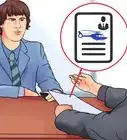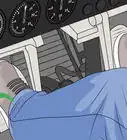This article was co-authored by Javier Diaz. Javier Diaz is an Entrepreneur & Stunt Helicopter Pilot, and owner of Wings Air Helicopters LLC. With over 20 years of flying experience, his company specializes in helicopter charters, tours, flight training, and aerial film production. He earned his BS from the United States Merchant Marine Academy and is a member of the Screen Actors Guild (SAG). As a Stunt Pilot, Javier has many major film credits, including several blockbuster films.
There are 13 references cited in this article, which can be found at the bottom of the page.
wikiHow marks an article as reader-approved once it receives enough positive feedback. This article received 20 testimonials and 100% of readers who voted found it helpful, earning it our reader-approved status.
This article has been viewed 408,414 times.
Ever dreamed of piloting a helicopter? Flying a helicopter, or rotorcraft, requires a different set of skills than flying an airplane, although there are some similarities. While an airplane depends on forward motion to move air over the wings and create lift, a helicopter creates lift using rotating blades. You need both hands and both feet to fly a helicopter. This guide can help you on your journey as a helicopter pilot.
Steps
Learning the Helicopter Controls
-
1Familiarize yourself with the helicopter components and controls.[1] Read your individual aircraft’s operating handbook. Here are some of the basic controls you’ll need to know to operate the helicopter:[2]
- The collective is the lever mounted on the cabin floor to left side of the pilot’s seat.
- The throttle is the twistable grip at the end of the collective.
- The cyclic is the “stick” located directly in front of the pilot’s seat.
- The tail rotor is controlled by the two pedals on the floor also known as anti-torque pedals.[3]
-
2Understand the helicopter's capabilities and limitations. The majority of accidents are caused when the rotor system gets overloaded. Most usually this occurs when pilots attempt maneuvers that require lift in excess of what the rotor system can produce or power-plant can provide.[4]Advertisement
-
3Operate the collective control with your left hand.[5]
- Raise the collective to make the helicopter rise, and lower it to make it go down. The collective changes the main rotor's blade angle collectively. The main rotor is on top of the helicopter.
- Adjust the throttle. As you raise the collective, you need to increase engine speed. Decrease speed as you lower the collective. Throttle is directly linked to the position of the collective lever so that the RPM is always in line with the collective setting. You will only need to make adjustments when necessary.
-
4Operate the cyclic control with your right hand. The cyclic is similar to a joystick, but sensitive, so make very small movements.[6]
- Push the cyclic forward to move forward, back to move backward, and to either side to travel sideways. The cyclic does not change the direction in which the front of the helicopter points, but it does cause the helicopter to tilt forward and back (pitch) or to the right and left (roll).
-
5Operate the tail rotor pedals with your feet. These two pedals (or anti-torque pedals) control the direction in which the helicopter is pointing, more or less having the same effect as the yaw pedals in an airplane.[7]
- Gently increase pressure on the left pedal to swing the nose left, or increase pressure right to swing the nose right.
- The yaw pedals increase or decrease the force that the tail rotor produces, thereby controlling the yaw. Without a tail rotor to counteract main rotor torque, the helicopter will naturally spin in the opposite direction of the main rotor.
Learning the Basic Maneuvers
-
1Take off.[8] Follow these steps to perform a standard takeoff:
- First, open the throttle slowly until you reach proper operating RPM.
- Pull the collective gradually up. As collective pitch increases, push the left pedal (right pedal for clockwise rotating main rotors). Continue pulling on the collective and depressing the left pedal. Adjust the pedal if the aircraft is turning to the left or right.
- The helicopter will leave the ground and you'll be able to use the cyclic. As you continue to pull the collective and depress the pedal, adjust the cyclic to level the aircraft as you take off. Push forward slightly to start moving forward.
- As the helicopter transitions from vertical to forward motion, it will shudder and the nose will pull up. Push the cyclic forward a little more to make sure you keep going forward. The phenomenon that causes the shudder is called effective translational lift (ETL).[9]
- As speed increases the rotor blade lift becomes more effective. It is important to anticipate for this phenomenon and correct for it.
- As you progress through ETL, reduce the collective lever and apply less pressure to the pedal. Push the cyclic forward to avoid an abrupt nose high attitude and reduction in forward speed.
- Once you’ve taken off, slightly release forward cyclic pressure. The aircraft will then begin to climb and gain airspeed. From this point, the pedals are primarily used to trim the aircraft. Most maneuvers will only require a combination of the cyclic and collective controls.
-
2Hover by finding a balance between the collective, cyclic and tail rotor controls.[10]
- Learn to do this with an instructor, who can operate the other controls while you practice them 1 at a time, and then in combination. You must learn to anticipate the time lag between when you adjust the controls and the helicopter's reaction.
-
3Climb and descend using speeds according to your pilot operating handbook. This will vary depending on terrain. Maintain 15-20 knots during a steep climb. Carefully increase collective and be sure not to exceed the yellow limit of the torque gauge.[11]
-
4Land, taking care to always have your landing target in sight, normally slightly to your right (pilots side). This may mean that you have adjust your trim so you are turned slightly to one side as you approach.
- Try to be around 200–500 feet (61.0–152.4 m) above ground or any obstacles when you are .5 kilometers from your landing area.
- Watch your airspeed. At around .2km from the landing area slow the aircraft to 40 knots and begin to descend. Check your descent rate. Be careful not to let your vertical speed go over 300 feet (91.4 m) per minute. Vertical speed can be adjusting by applying the necessary amount of collective.
- As you approach the edge of the landing area, gradually slow to 30, then 20 knots. You may need to bring the nose up to decrease airspeed. Doing so will momentarily obscure your sight of the landing area.
- Keep moving forward when you get to the landing area, since it's much harder to control drift and land on the target if you hover first. Once the spot you want to land appears to slide beneath the nose of the aircraft you can then reduce the collective.
- Arm the parking brake. Ease the cyclic back to reduce momentum and then forward to level the altitude. Keep rate of descent as low as possible — adjust the collective appropriately.
- Once you have made contact with the ground, check that your parking brake is armed and then reduce all power.
Community Q&A
-
QuestionWhat are some problems of flying a helicopter?
 Droney DelonCommunity AnswerThe average pilot gets humbled quickly attempting to fly a helicopter the very first time. Control is typically lost within a few seconds. It is a direct outcome of not producing positive dynamic balance. The frequent input of flight control is needed to hold a constant height and position above the surface.
Droney DelonCommunity AnswerThe average pilot gets humbled quickly attempting to fly a helicopter the very first time. Control is typically lost within a few seconds. It is a direct outcome of not producing positive dynamic balance. The frequent input of flight control is needed to hold a constant height and position above the surface. -
QuestionAt what age can I fly a helicopter?
 Community AnswerYou have to be 16 years old to fly the helicopter solo, 17 to get a Helicopter Private Pilot's Licence (PPL), and 18 to get a Commercial Pilot's Licence (CPL).
Community AnswerYou have to be 16 years old to fly the helicopter solo, 17 to get a Helicopter Private Pilot's Licence (PPL), and 18 to get a Commercial Pilot's Licence (CPL). -
QuestionHow much does training cost per hour?
 Community AnswerThough this can vary greatly in rate depending on area, you can expect to pay around $250/hr for the helicopter, and about $100/hour for the instructor. If you can afford it, some places will offer flat rates and better prices if you buy blocks of training hours.
Community AnswerThough this can vary greatly in rate depending on area, you can expect to pay around $250/hr for the helicopter, and about $100/hour for the instructor. If you can afford it, some places will offer flat rates and better prices if you buy blocks of training hours.
Warnings
- When you begin instruction, be wary of "over-controlling," a mistake that many novices make when they adjust a control and then fail to wait for the helicopter's reaction. If you adjust again before the helicopter responds, you make twice the adjustment that's needed and lose control of the helicopter.⧼thumbs_response⧽
- NEVER attempt to fly a helicopter or any other aircraft without proper training. While this guide will be useful for a simulator, you should not use it to fly a helicopter in real life.⧼thumbs_response⧽
References
- ↑ https://www.youtube.com/watch?v=ysadvsXDVDU
- ↑ https://www.faa.gov/regulations_policies/handbooks_manuals/aviation/helicopter_flying_handbook/media/hfh_ch03.pdf
- ↑ https://www.scienceabc.com/innovation/why-helicopters-have-tail-rotor-purpose-torque-coaxial-rotors.html
- ↑ https://www.faa.gov/regulations_policies/handbooks_manuals/aviation/helicopter_flying_handbook/media/hfh_ch02.pdf
- ↑ https://www.helis.com/howflies/ontheair.php
- ↑ https://www.youtube.com/watch?v=hVeq048NVuY
- ↑ https://www.faa.gov/regulations_policies/handbooks_manuals/aviation/helicopter_flying_handbook/media/hfh_ch03.pdf
- ↑ https://www.youtube.com/watch?v=RI4AUTGlegI
- ↑ https://www.faasafety.gov/gslac/ALC/course_content.aspx?cID=104&sID=451&preview=true
About This Article
To fly a helicopter, your left hand will operate the collective control, which changes the main rotor’s blade angle. Raise the collective to make the helicopter rise, and lower it to make it go down. With your right hand, you'll operate the cyclic control, which is similar to a joystick. Push the cyclic forward to move forward, back to move back, and to either side to move sideways. Finally, your feet will control the tail rotor pedals, which control the direction in which the helicopter is pointing. To learn about basic maneuvers, such as how to take off and land, keep reading!
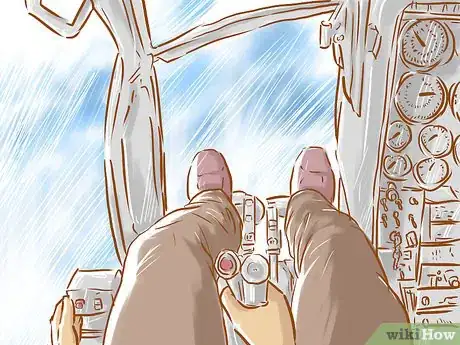
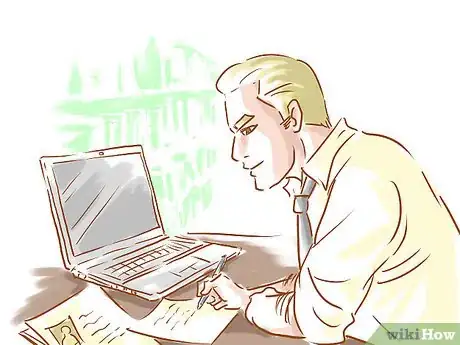




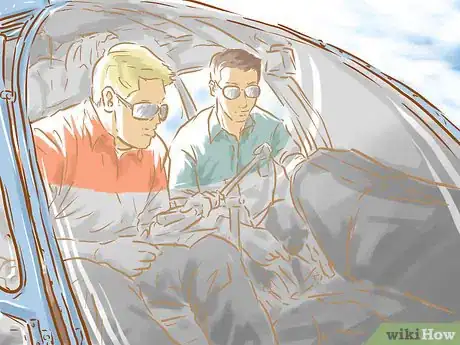
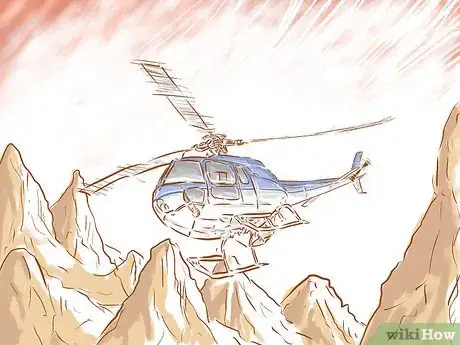

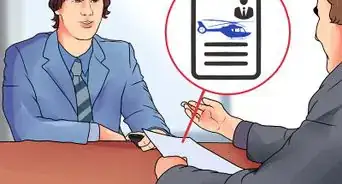

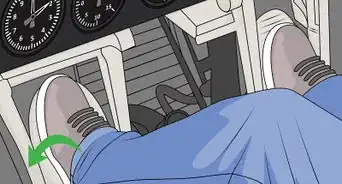


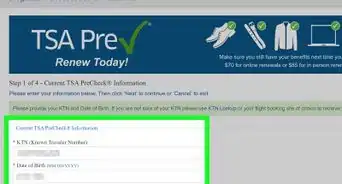
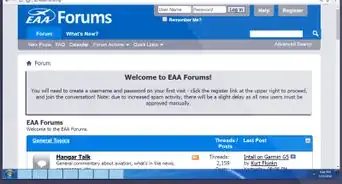

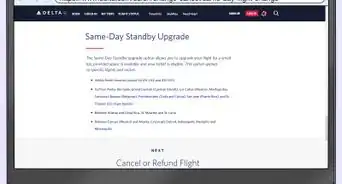
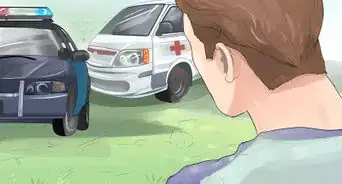



-Step-15.webp)










